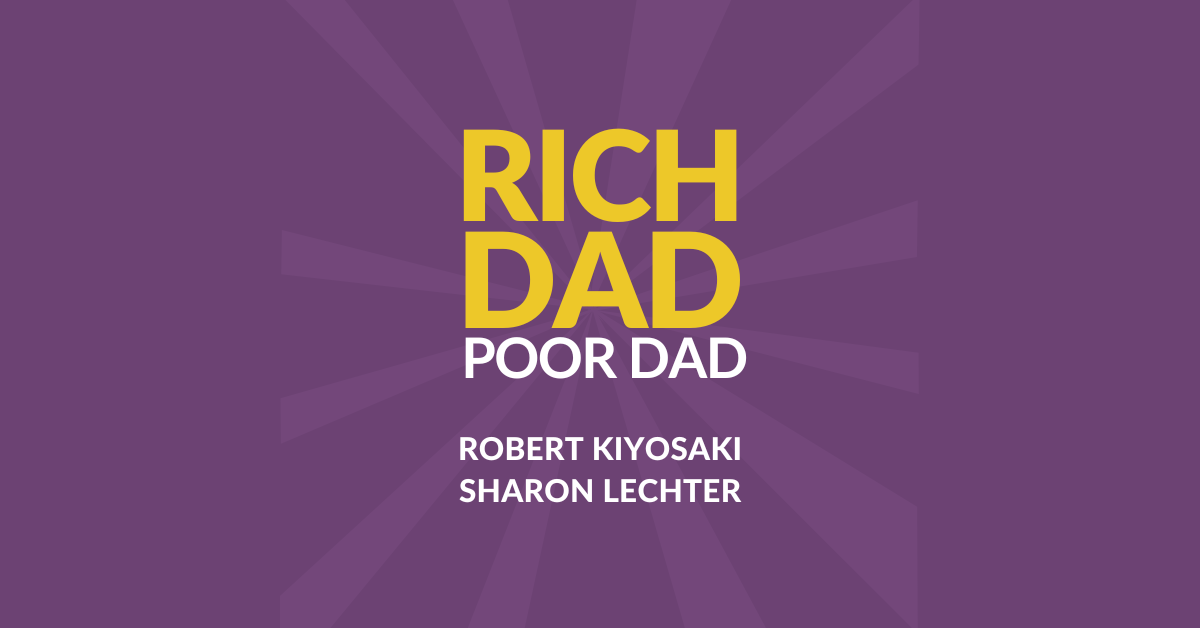Rich Dad Poor Dad: Lessons in building your wealth

Rich Dad Poor Dad by Robert Kiyosaki is a personal finance classic that has influenced millions of readers around the world. First published in 1997, the book challenges traditional notions of wealth and financial education, offering readers a unique perspective on how to achieve financial independence. Kiyosaki’s message revolves around the contrast between two father figures—the author’s own educated, but financially struggling father (referred to as the “Poor Dad”) and his best friend’s father, a wealthy entrepreneur (the “Rich Dad”). This comparison serves as the foundation for the book’s lessons, which focus on shifting mindsets about money, investing, and financial literacy.
In this article, we’ll dive into the key lessons from Rich Dad Poor Dad, breaking them down by chapter and discussing the impact the book has had on personal finance education.
Chapter 1: Rich Dad, Poor Dad
The first chapter introduces the central theme of the book: the difference in mindset between the “Poor Dad” and the “Rich Dad.” Kiyosaki’s biological father (the Poor Dad) believed in traditional education, working hard, and securing a stable job to ensure financial security. On the other hand, the Rich Dad promoted financial independence through entrepreneurship, investing, and acquiring assets.
Kiyosaki highlights how these contrasting approaches shaped his understanding of money. One of the critical takeaways from this chapter is the idea that financial education is more important than academic qualifications when it comes to building wealth. The Rich Dad’s lessons center on the importance of learning how money works and how to make money work for you.
Chapter 2: The Rich Don’t Work for Money
In this chapter, Kiyosaki expands on the idea that the rich do not work for money, but rather, they make money work for them. He describes how people often fall into the “rat race,” where they are stuck working to pay bills, but never accumulate wealth. The Rich Dad teaches Kiyosaki that the key to financial success is not to work for a paycheck but to focus on building assets.
The chapter stresses the importance of understanding the difference between assets and liabilities. While the Poor Dad believed in job security and saving money, the Rich Dad emphasized the need to invest in assets that generate income. The chapter encourages readers to adopt a mindset that seeks out opportunities for passive income rather than solely relying on active income from a job.
Chapter 3: Why Teach Financial Literacy?
In this chapter, Kiyosaki introduces the concept of financial literacy, which is the foundation of his approach to wealth building. He explains that schools teach us how to earn money but do not educate us on how to manage, invest, or grow it. Financial literacy involves understanding the difference between assets and liabilities and knowing how to manage them effectively.
Kiyosaki argues that the poor and middle class often misunderstand these concepts. They tend to accumulate liabilities, thinking they are assets, which keeps them financially stuck. The Rich Dad’s advice is simple: focus on acquiring income-generating assets like stocks, real estate, and businesses, while minimizing liabilities such as debt, cars, and luxury goods.
Chapter 4: Mind Your Own Business
This chapter shifts focus to the idea of taking control of your financial future by “minding your own business.” Kiyosaki encourages readers to think like entrepreneurs and focus on building their asset columns. He explains that even if you have a job, you should always be working on your own business—whether it’s investing in real estate, starting a side business, or building a stock portfolio.
The chapter highlights the importance of financial independence. By minding your own business, you create opportunities for passive income, which can eventually replace the need for a regular job. This idea ties back to the concept of making money work for you rather than working for money.
Chapter 5: The History of Taxes and the Power of Corporations
In this chapter, Kiyosaki explains how the rich use corporations and tax laws to their advantage. He delves into the history of taxation and how governments initially introduced taxes to target the wealthy but ended up taxing the middle class more heavily over time. The Rich Dad teaches Kiyosaki about the power of corporations and how they can be used to reduce tax liabilities legally.
The chapter emphasizes that financial literacy includes understanding how the tax system works and using it to your benefit. Corporations, for example, allow business owners to deduct expenses before taxes, a benefit that employees do not have.
Chapter 6: The Rich Invent Money
This chapter focuses on the concept of financial creativity and risk-taking. Kiyosaki explains that the rich are not afraid to take risks when it comes to money because they understand how to manage and mitigate those risks. He encourages readers to be innovative and seize opportunities to create wealth rather than waiting for opportunities to come to them.
One of the key lessons here is that wealth is not about how much money you make, but about how well you manage and invest it. The Rich Dad teaches Kiyosaki that money is a tool, and those who understand how to leverage it can create their own financial opportunities.
Chapter 7: Work to Learn—Don’t Work for Money
In this chapter, Kiyosaki emphasizes the importance of continuous learning. He explains that many people focus on earning money from their jobs without developing the skills needed to manage or invest that money effectively. The Rich Dad advises Kiyosaki to focus on acquiring skills that will make him financially successful in the long term, rather than simply seeking a paycheck.
Kiyosaki encourages readers to take jobs or pursue opportunities that will teach them valuable skills, even if the pay is lower. By doing so, they can build a foundation for future financial success.
Chapter 8: Overcoming Obstacles
This chapter addresses the psychological barriers that prevent people from achieving financial success, such as fear, cynicism, and laziness. Kiyosaki explains that these obstacles often hold people back from taking risks or making the necessary changes to improve their financial situation.
The Rich Dad teaches that overcoming fear and embracing failure are crucial steps on the path to wealth. Kiyosaki encourages readers to adopt a growth mindset, viewing mistakes as learning opportunities rather than setbacks.
Chapter 9: Getting Started
In the final chapter, Kiyosaki provides practical advice for getting started on the path to financial independence. He encourages readers to take action by setting financial goals, educating themselves, and starting to build their asset columns.
The chapter stresses that the most important step is simply to begin. Whether it’s investing in stocks, buying real estate, or starting a business, the key is to take control of your financial future and make decisions that move you toward financial independence.
Conclusion
Rich Dad Poor Dad offers a fresh perspective on wealth-building by emphasizing financial education, entrepreneurship, and the importance of acquiring assets. The book challenges traditional views on money and provides readers with actionable advice on how to take control of their financial futures. While some critics argue that Kiyosaki’s ideas are too simplistic or not universally applicable, the book’s core message remains powerful: financial independence is achievable through knowledge, mindset, and the smart management of money.
Personal Learning
In Rich Dad Poor Dad, I learned that embracing risk is crucial for financial growth; the wealthy understand the importance of taking calculated risks in investments, whether in stocks, real estate, or businesses, rather than just seeking security. While saving is important, the book emphasizes that it’s the strategic investment of those savings into income-generating assets that leads to wealth creation. Ultimately, the most empowering lesson is that I am my greatest asset; investing in my skills, knowledge, and experience is vital for financial success. By committing to lifelong learning and improving my financial literacy, I can effectively shape my financial future and increase my wealth-generating potential.
Featured Image Credits: Get Story Shots








